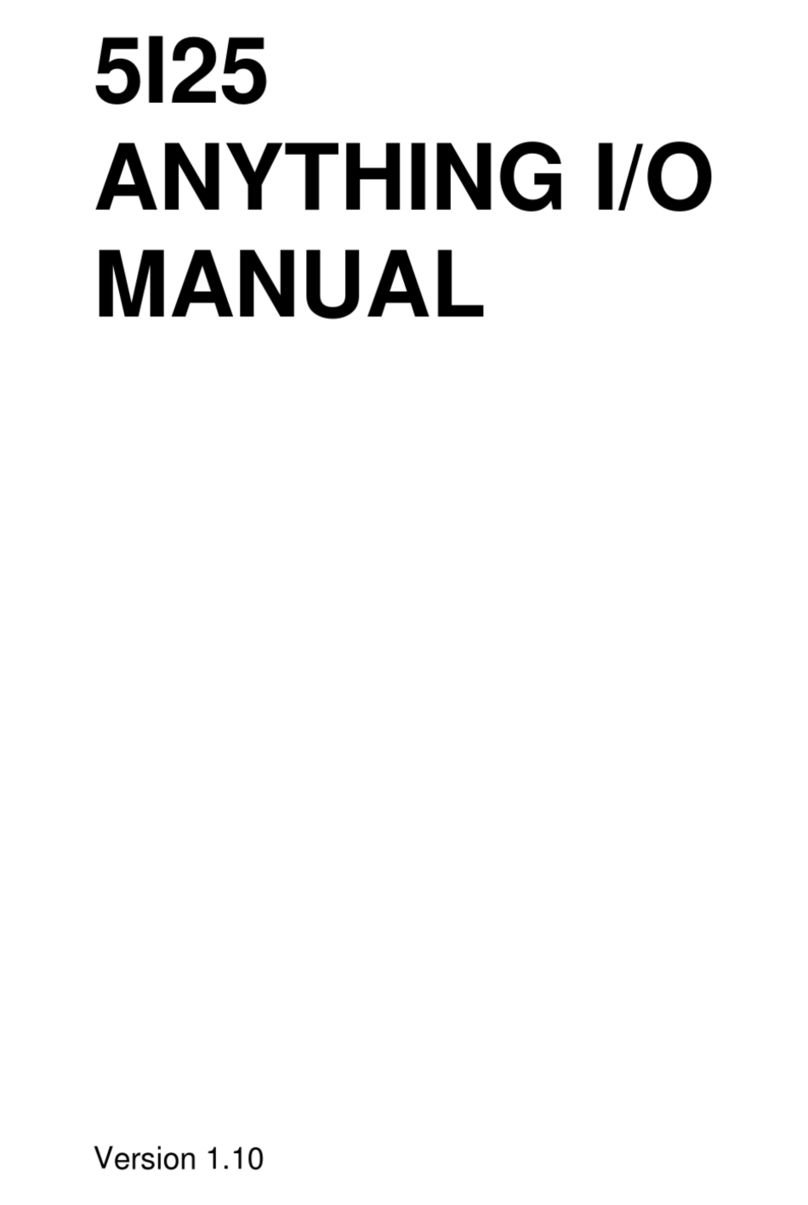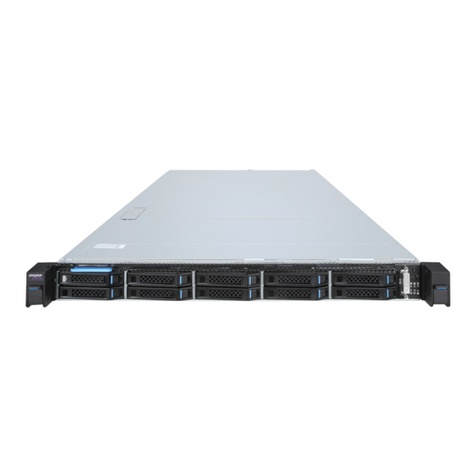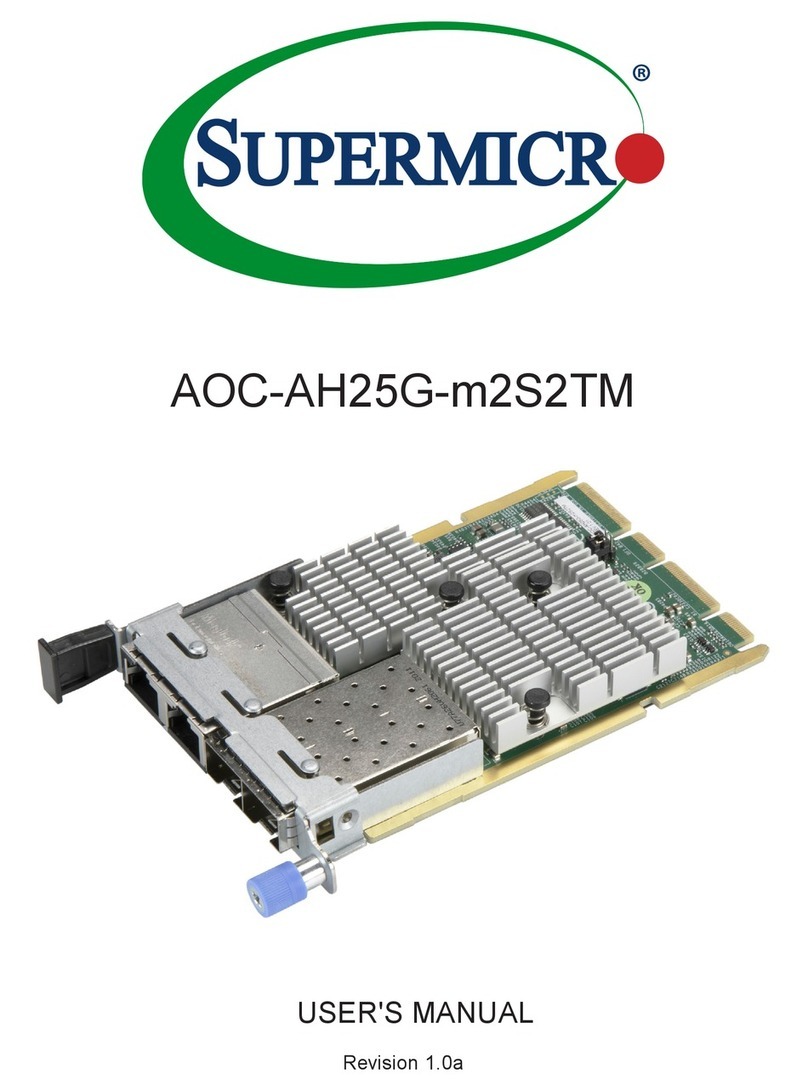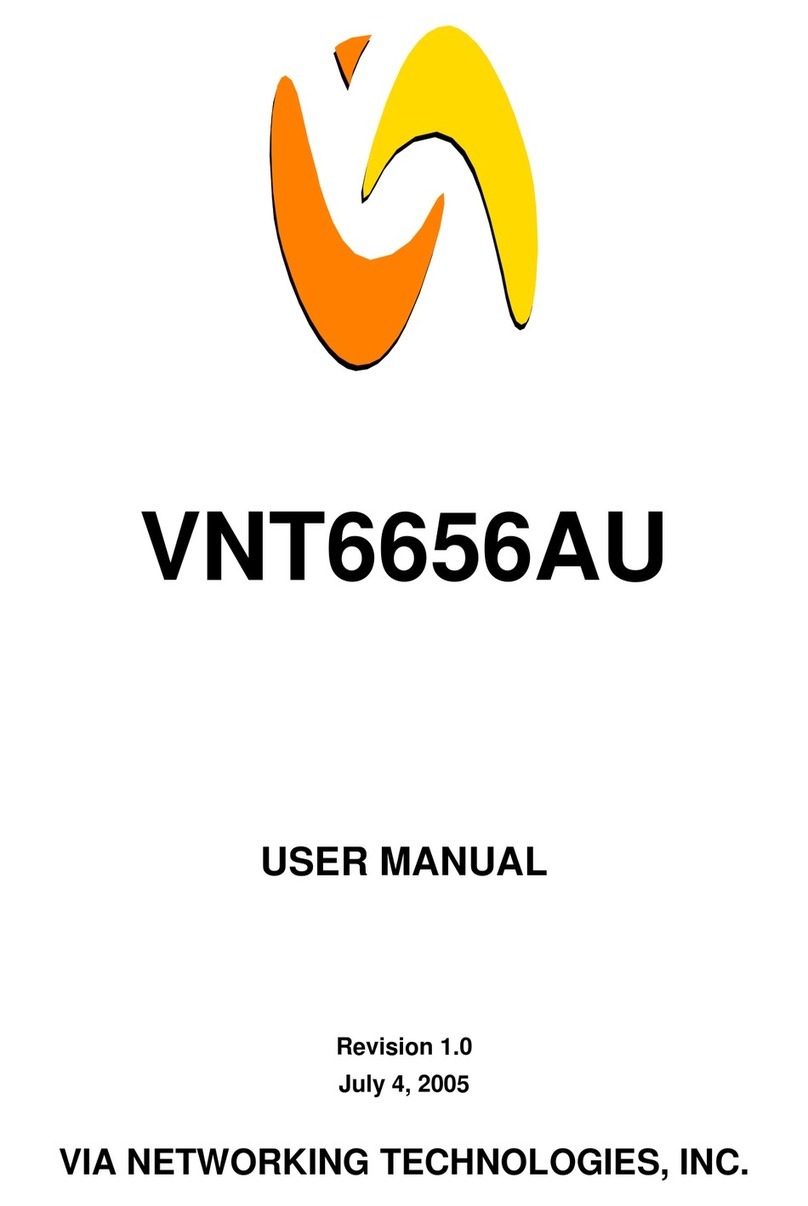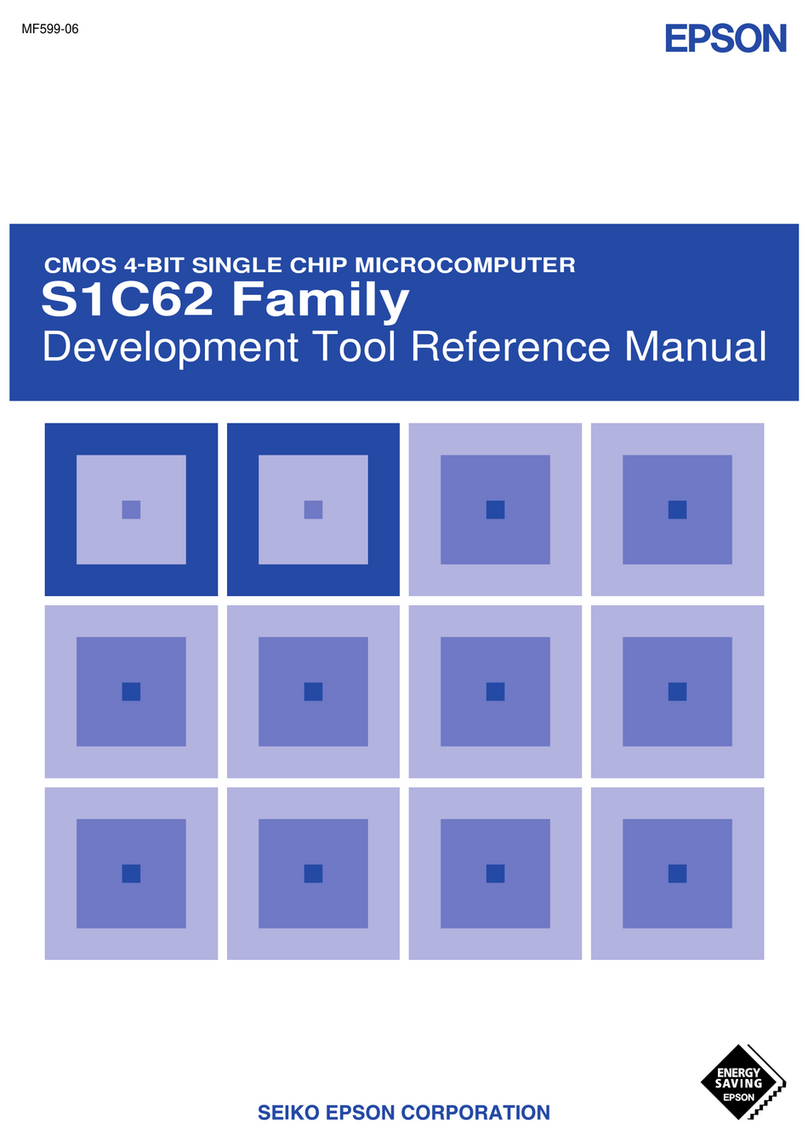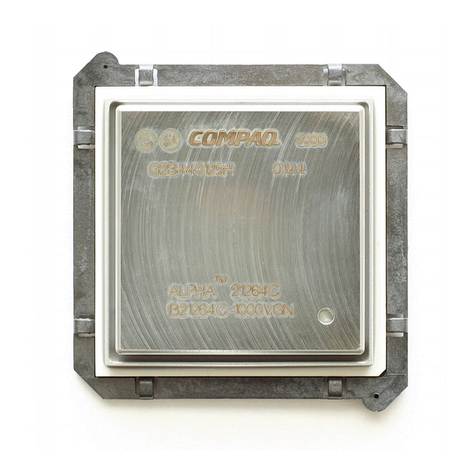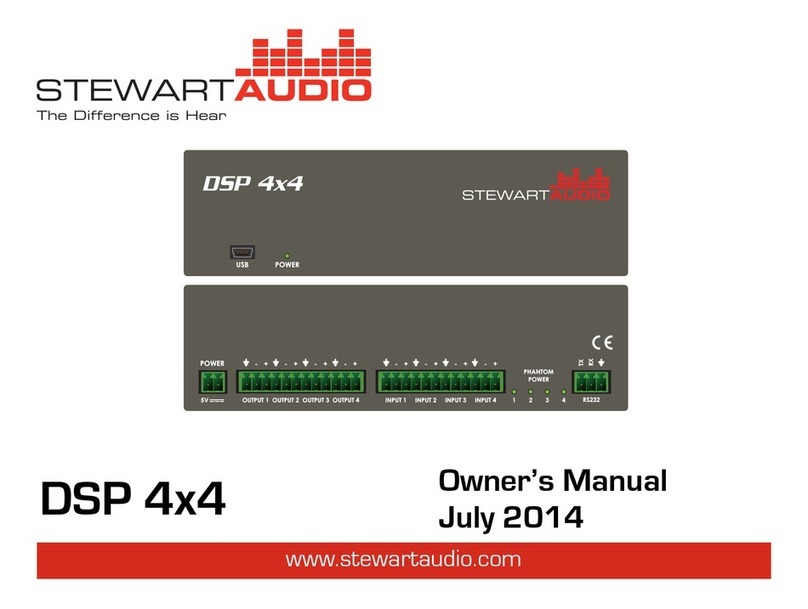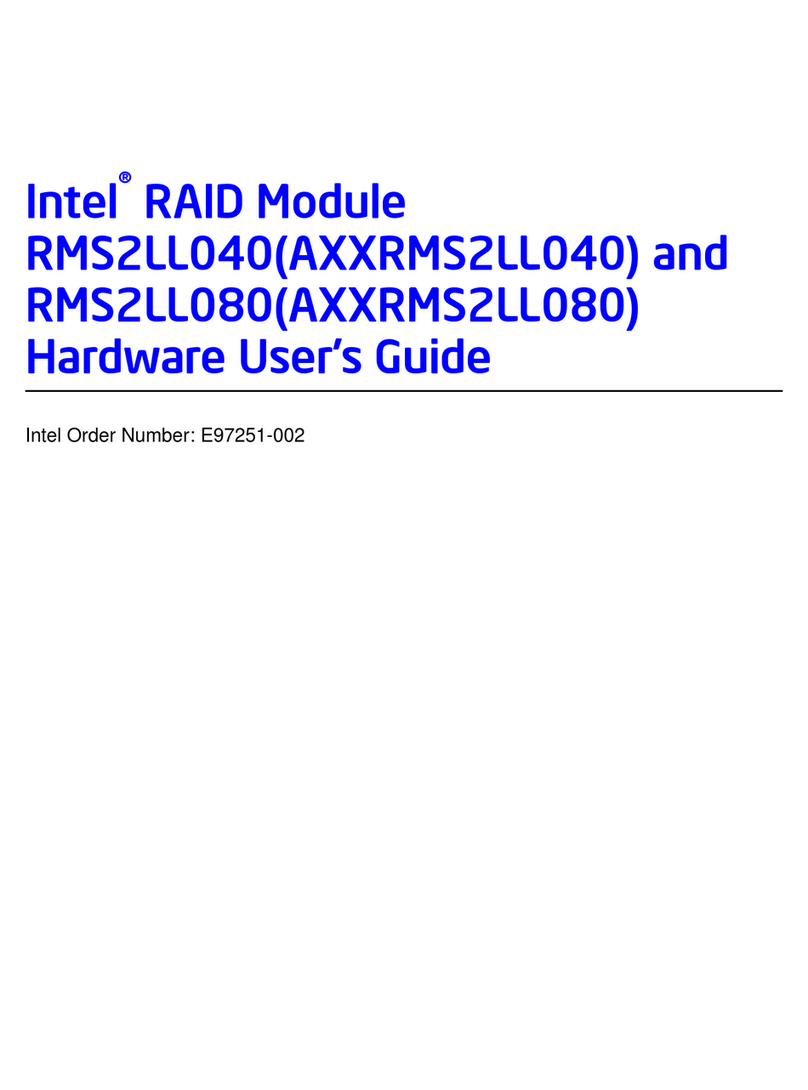Mesa 4C81 User manual

4C81 MANUAL
Version 2.1


iii
Table of Contents
GENERAL . . . . . . . . . . . . . . . . . . . . . . . . . . . . . . . . . . . . . . . . . . . . . . . . . . . . . . . . . . 1
DESCRIPTION ................................................. 1
HARDWARE CONFIGURATION . . . . . . . . . . . . . . . . . . . . . . . . . . . . . . . . . . . . . . . . . 2
GENERAL ..................................................... 2
BOOTOPTION ................................................. 2
FPGA/CPLD LVTTL CONNECTOR POWER . . . . . . . . . . . . . . . . . . . . . . . . . . 2
FPGA/CPLD LVTTL OUTPUT VCC . . . . . . . . . . . . . . . . . . . . . . . . . . . . . . . . . . 2
NAND FLASH WRITE PROTECT . . . . . . . . . . . . . . . . . . . . . . . . . . . . . . . . . . . 2
CONNECTORS . . . . . . . . . . . . . . . . . . . . . . . . . . . . . . . . . . . . . . . . . . . . . . . . . . . . . . 3
CONNECTOR AND DEFAULT JUMPER LOCATIONS . . . . . . . . . . . . . . . . . . . 3
POWER/SERIAL CONSOLE CONNECTOR . . . . . . . . . . . . . . . . . . . . . . . . . . 4
4C81 SERIAL ADAPTER . . . . . . . . . . . . . . . . . . . . . . . . . . . . . . . . . . . . . . . . . . 4
FPGA/CPLD LVTTL CONNECTOR . . . . . . . . . . . . . . . . . . . . . . . . . . . . . . . . . . 5
FPGA/CPLD LVDS CONNECTOR . . . . . . . . . . . . . . . . . . . . . . . . . . . . . . . . . . 6
ETHERNET CONNECTORS . . . . . . . . . . . . . . . . . . . . . . . . . . . . . . . . . . . . . . . 6
JTAG CONNECTOR . . . . . . . . . . . . . . . . . . . . . . . . . . . . . . . . . . . . . . . . . . . . . 7
CPU OPERATION . . . . . . . . . . . . . . . . . . . . . . . . . . . . . . . . . . . . . . . . . . . . . . . . . . . . 8
POWER . . . . . . . . . . . . . . . . . . . . . . . . . . . . . . . . . . . . . . . . . . . . . . . . . . . . . . . 8
SERIAL CONSOLE . . . . . . . . . . . . . . . . . . . . . . . . . . . . . . . . . . . . . . . . . . . . . . 8
PC/104-PCI EXPANSION . . . . . . . . . . . . . . . . . . . . . . . . . . . . . . . . . . . . . . . . . 8
MINI PCI EXPANSION . . . . . . . . . . . . . . . . . . . . . . . . . . . . . . . . . . . . . . . . . . . 8
ETHERNET PORTS . . . . . . . . . . . . . . . . . . . . . . . . . . . . . . . . . . . . . . . . . . . . . 8
GPIOBITS..................................................... 9
FPGAOPTION ................................................ 10
FPGA/CPU CONNECTIONS . . . . . . . . . . . . . . . . . . . . . . . . . . . . . . . . . . . . . . 10
FPGA CONFIGURATION . . . . . . . . . . . . . . . . . . . . . . . . . . . . . . . . . . . . . . . . 11
EXAMPLE FPGA CONFIG FILE . . . . . . . . . . . . . . . . . . . . . . . . . . . . . . . . . . . 12
P4 PINOUT WITH EXAMPLE FPGA CONFIGURATION . . . . . . . . . . . . . . . . 12
P3 PINOUT WITH EXAMPLE FPGA CONFIGURATION . . . . . . . . . . . . . . . . 13
FPGAPOKE UTILITY . . . . . . . . . . . . . . . . . . . . . . . . . . . . . . . . . . . . . . . . . . . . 13
CPLD I/O . . . . . . . . . . . . . . . . . . . . . . . . . . . . . . . . . . . . . . . . . . . . . . . . . . . . . 14
CPLD CPU INTERFACE . . . . . . . . . . . . . . . . . . . . . . . . . . . . . . . . . . . . . . . . . 14
STANDARD CPLD CONFIGURATION . . . . . . . . . . . . . . . . . . . . . . . . . . . . . . 15
P4 PINOUT WITH STANDARD CPLD CONFIGURATION . . . . . . . . . . . . . . . 15
P3 PINOUT WITH STANDARD CPLD CONFIGURATION . . . . . . . . . . . . . . . 16
CPLD JTAG PINOUT . . . . . . . . . . . . . . . . . . . . . . . . . . . . . . . . . . . . . . . . . . . . 16

iv
Table of Contents
SOFTWARE
GENERAL .....................................................17
BOOTLOADER .................................................17
NET BOOT REQUIREMENTS . . . . . . . . . . . . . . . . . . . . . . . . . . . . . . . . . . . . . . 18
NETBSD SOFTWARE
GENERAL .....................................................19
REMOTE FILE ACCESS . . . . . . . . . . . . . . . . . . . . . . . . . . . . . . . . . . . . . . . . . . 19
BOOT ROM UPDATING . . . . . . . . . . . . . . . . . . . . . . . . . . . . . . . . . . . . . . . . . . 19
NAND FLASH UPDATING . . . . . . . . . . . . . . . . . . . . . . . . . . . . . . . . . . . . . . . . . 20
NETBSD NAND FLASH IMAGE . . . . . . . . . . . . . . . . . . . . . . . . . . . . . . . . . . . . 21
CHANGING NAND FLASH FILESYSTEM MODE . . . . . . . . . . . . . . . . . . . . . . . 21
CHANGING PASSWORDS . . . . . . . . . . . . . . . . . . . . . . . . . . . . . . . . . . . . . . . . 21
ENABLING SSHD . . . . . . . . . . . . . . . . . . . . . . . . . . . . . . . . . . . . . . . . . . . . . . . 22
CHANGING PASSWORDS . . . . . . . . . . . . . . . . . . . . . . . . . . . . . . . . . . . . . . . . 22
NETBSD NET BOOT BINARY DISTRIBUTION . . . . . . . . . . . . . . . . . . . . . . . . 22
NETBSD TOOLCHAIN . . . . . . . . . . . . . . . . . . . . . . . . . . . . . . . . . . . . . . . . . . . 23
LINUX SOFTWARE . . . . . . . . . . . . . . . . . . . . . . . . . . . . . . . . . . . . . . . . . . . . . . . . . . . 24
GENERAL .....................................................24
KERNEL BOOT OPTIONS . . . . . . . . . . . . . . . . . . . . . . . . . . . . . . . . . . . . . . . . 24
SEEPROM.....................................................24
KCMD/NETKCMD ...............................................24
SPECIFICATIONS . . . . . . . . . . . . . . . . . . . . . . . . . . . . . . . . . . . . . . . . . . . . . . . . . . . . 26

4C81 MANUAL 1
GENERAL
DESCRIPTION
The 4C81 is a low cost, low power ARM based PC104-PCI CPU. Designed for
networked applications, the 4C81 has two 10/100 baseT Ethernet interfaces and a slot for
a WI-FI card or other Mini-PCI device. The 166 MHz CPU card consumes less than 2 watts
total from a single 5V supply, making Solar powered applications practical.
System resources include 32M or 64M of RAM and 32M or more of NAND Flash
memory, 36 I/O bits provided by either a CPLD or an FPGA and an RS-232 serial port.
PC/104-PCI expansion is provided for up to 2 external bus master cards. The Ethernet
interfaces generates hardware TCP checksums allowing close to wire speed routing
through the 4C81.
An optional on card 200K or 400K gate Spartan3 FPGA with 32 bit local bus
connection provides flexible user I/O or a custom processing accelerator. The FPGA has
36UserI/O pinsavailable, 24singleended LVTTLI/Obitsonastandard50pinheaderwith
interleaved grounds, and 12 I/O bits on a 20 pin 2MM header organized as 6 LVDS pairs
with grounds between pairs.
The 4C81 can run Linux or NetBSD and has a jumper selectable netboot option with
NFS support to allow simple system debug and software development.

4C81 MANUAL 2
HARDWARE CONFIGURATION
GENERAL
Jumper positions are specified with an upright card orientation. The 4C81 is upright
when the top of the card (connector side) faces you, the PC/104-PLUS connector is away
from you and the Ethernet connectors are on the right hand side.
NETBOOT OPTION
The 4C81 can boot from its on card NAND flash or can netboot from a remote NFS
server. This is useful in case the NAND flash becomes corrupted and for initial setup. W8
determines whether the 4C81 boots from the on card NAND flash chip or attempts a
network boot. When W8 is in the right hand position, the 4C81 will boot from NAND flash.
When W8 is in the left hand position the 4C81 will attempt a net boot. Network boot is
always from Ethernet port 0.
FPGA LVTTL VCC
The I/O voltage for the FPGA pins that connect to the LVTTL connector can be user
selected. Jumper W7 selects the I/O voltage. When W7 is in the right hand position, the I/O
voltage is 2.5V. When W7 is in the left hand position, the I/O voltage is 3.3V.
FPGA LVTTL CONNECTOR POWER
The LVTTL connector can supply power to connected daughter cards. This power
can be either 3.3V or 5V. When jumper W9 is in the left hand position, 5V is supplied on pin
49 of the LVTTL I/O connector. When W9 is in the right hand position, 3.3V is supplied on
pin 49.
NAND FLASH WRITE PROTECT
The on card NAND flash can be protected against writes by removing jumper W3.
This will prevent any change of NAND flash contents.

4C81 MANUAL 3
CONNECTORS
CONNECTOR AND DEFAULT JUMPER LOCATIONS

4C81 MANUAL 4
CONNECTORS
SERIAL/POWER CONNECTOR
P1 is the serial console and power connector. Note that the first 6 pins match the
standard DE9 pin male (DTE) serial port pinout used on PC serial ports.
PIN FUNCTION DIRECTION
1 CD TO 4C81
2 DSR TO 4C81
3 RXD TO 4C81
4 RTS FROM 4C81
5 TXD FROM 4C81
6 CTS TO 4C81
7 +5V TO 4C81
8 GND TO 4C81
9 GND TO 4C81
10 +5V TO 4C81
4C81 SERIAL ADAPTER
The 4C81 serial adapter converts the DTE pinout of the 4C81 to DCE for direct
connection to PC type 9 pin serial ports, and also has a 4 pin .1" 5V power connector. The
5V connector on the serial adapter is pinned out as follows:
1 +5V
2 GND
3 GND
4 +5V

4C81 MANUAL 5
CONNECTORS
FPGA/CPLD LVTTL CONNECTOR
P4 is the FPGA/CPLD LVTTL connector. P4 is a 50 pin .1" header. P4 is compatible
with Mesa’s Anything-I/O daughter cards with the restriction that FPGA I/O signals are not
5V tolerant. The CPLD I/O is 5V tolerant.
P4 CONNECTOR PINOUT
P4 PIN FUNC FPGA PIN P4 PIN FUNC FPGA PIN
1 IO0 77 3 IO1 78
5 IO2 79 7 IO3 80
9 IO4 82 11 IO5 83
13 IO6 84 15 IO7 85
17 IO8 86 19 IO9 87
21 IO10 89 23 IO11 90
25 IO12 92 27 IO13 93
29 IO14 95 31 IO15 96
33 IO16 97 35 IO17 98
37 IO18 99 39 IO19 100
41 IO20 102 43 IO21 103
45 IO22 104 47 IO23 105
49 POWER
All even pins are connected to ground.
The POWER pin can be connected to either 3.3V or 5V power depending on the
position of W7.

4C81 MANUAL 6
CONNECTORS
FPGA/CPLD LVDS CONNECTOR
P3 is a 20 pin 2mm header that connects to 12 FPGA I/O pins intended for use as
a LVDS signals. P3 pinout is as follows:
P3 PIN FUNC FPGA PIN P3 PIN FUNC FPGA PIN
1 GND XX 11 LVDS3+ 127
2 LVDS0+ 118 12 LVDS3- 128
3 LVDS0- 119 13 GND XX
4 GND XX 14 LVDS4+ 129
5 LVDS1+ 122 15 LVDS4- 130
6 LVDS1- 123 16 GND XX
7 GND XX 17 LVDS5+ 131
8 LVDS2+ 124 18 LVDS5- 132
9 LVDS2- 125 19 GND XX
10 GND XX 20 +3.3V XX
Note that The DCI (internal termination) feature does not work properly on Rev.A
cards so if the LVDS feature is used, External termination must be supplied. This is fixed
on card rev.B and above. CPLDversions of the 4C81 provide 12 I/O bits onthe LVDS pins.
ETHERNET CONNECTORS
The 4C81 has 2 Ethernet ports. Port 0 and Port 1. Port 0 is the port closest to the
PC/104-PLUSconnector.BothportsarestandardRJ45jacks. Lowprofileunshieldedjacks
are used in order to meet the PC/104 component height specifications.

4C81 MANUAL 7
CONNECTORS
JTAG CONNECTOR
P2 is a 10 pin 2mm connector that gives access to the JTAG boundary scan chain
on the 4C81s CPU and FPGA.. P2 connector pinout is as follows:
PIN FUNCTION DIR
1 TMS TO 4C81
2 TDI TO 4C81
3 TDO FROM 4C81
4 TCK TO 4C81
5 /RST TO 4C81
6 GND
7 2.5V
8 /ROMCS TO 4C81 (test mode only)
9 /ROMOE TO 4C81 (test mode only)
10 /ROMWE TO 4C81 (test mode only)

4C81 MANUAL 8
CPU OPERATION
POWER
Powerissuppliedtothe4C81via the serialconsole/powerconnectororthePC/104-
PLUSbus.The4C81requires5Vpoweronly.If5VisnotrequiredforthePC/104-PLUSbus
or a Mini-PCI card, the 5V supply can vary from 4V to 5V, as no 5V power is used on the
4C81 itself. If +12V and or -12V power are required by a PC/104-PLUS card, these must
be supplied via the PC/104-PLUS bus.
SERIAL CONSOLE
The 4C81 has a single serial port that is used as console I/O by the boot ROM and
LinuxorNetBSD.Thedefaultcommunicationparametersare:38400baud,8bits,noparity.
Note that the serial console pinout is DTE so that a null modem is required to connect the
4C81s console to A PC terminal emulator. A Null modem adapter is available from Mesa
(NullModemX). This adapter also has the 5V power tap to simplify powering the 4C81.
PC/104-PCI EXPANSION
The 4C81 is a PC/104-PCI card and can accept PC/104-PCI expansion cards. The
4C81 has a 3.3V PCI bus and will only work properly with 3.3V or universal PC/104-PCI
cards. 5V cards are not supported and may damage the 4C81. Two bus master cards
are supported: slots 1, and 2. Slot 0 is reserved for the Mini-PCI card. A non bus master
card can be accommodated in slot 3.
The 4C81 on card regulator can supply up to 1.5A of 3.3V power to the PC/104-PCI bus.
MINI-PCI EXPANSION
A single Mini-PCI type 3A socket is provided for wireless and other Mini-PCI
cards. This socket is slot 0 of the PCI expansion bus.
ETHERNET PORTS
Two 10/100 BaseT Ethernet ports are provided. These ports support full duplex
for high performance and auto-MDX for wiring simplicity. Three surface mount LEDS are
provided on each port to monitor link status.

4C81 MANUAL 9
CPU OPERATION
CPU GPIO BITS
The 4C81 CPU chip has 16 GPIO bits that are used for various on card functions.
The bit definitions are as follows:
GPIO-0 INPUT PCI INTERRUPT
GPIO-1 INPUT WLAN RFON SENSE
GPIO-2 INPUT FPGA/CPLD IRQ
GPIO-3 OUTPUT KSE0 ACTIVITY
GPIO-4 OUTPUT KSE1 ACTIVITY
GPIO-5 OUTPUT SERIAL EEPROM CHIP SELECT
GPIO-6 OUTPUT GREEN LED CR3
GPIO-7 OUTPUT FPGA /PWREN
GPIO-8 OUTPUT NOR FLASH A22 (4M PAGE BIT)
GPIO-9 INPUT NAND FLASH RDY/BUSY
GPIO-10 OUTPUT FPGA /PROGRAM
GPIO-11 INPUT FPGA /DONE SENSE
GPIO-12 OUTPUT NAND FLASH CE
GPIO-13 I/O EEPROM CLK CW8 SENSE
GPIO-14 I/O EEPROM DI CW10 SENSE
GPIO-15 I/O EEPROM DO BW6,W11 SENSE

4C81 MANUAL 10
CPU OPERATION
FPGA OPTION
The4C81canbeprovidedwithanoncardSpartan3FPGAwith200Kor400Kgates.
This FPGA can be used for custom I/O or a co-processor. 36 uncommitted FPGA I/O bits
are available for user applications. 24 of these I/O bits are designed for single ended 3.3V
or 2.5V LVTTL applications and 12 are designed for differential 2.5V LVDS applications.
FPGA CPU INTERFACE
The FPGA connects to the 4C81 CPUs 32 bit data bus. 9 addresses are connected
to the FPGA giving a address span of 512 32 bit words. In addition the FPGA connects to
CPU /ECS0 and read and write strobes.
CPU SIG FPGA PIN DIR CPU SIG FPGA PIN DIR
MD0 65 BIDIR MD13 7 BIDIR
MD1 63 BIDIR MD14 8 BIDIR
MD2 60 BIDIR MD15 10 BIDIR
MD3 59 BIDIR MD16 11 BIDIR
MD4 51 BIDIR MD17 12 BIDIR
MD5 50 BIDIR MD18 13 BIDIR
MD6 47 BIDIR MD19 14 BIDIR
MD7 46 BIDIR MD20 15 BIDIR
MD8 1 BIDIR MD21 17 BIDIR
MD9 2 BIDIR MD22 18 BIDIR
MD10 4 BIDIR MD23 20 BIDIR
MD11 5 BIDIR MD24 21 BIDIR
MD12 6 BIDIR MD25 23 BIDIR

4C81 MANUAL 11
CPU OPERATION
FPGA CPU INTERFACE
CPU SIG FPGA PIN DIR CPU SIG FPGA PIN DIR
MD26 24 BIDIR MA6 36 TO FPGA
MD27 25 BIDIR MA7 44 TO FPGA
MD28 26 BIDIR MA8 56 TO FPGA
MD29 27 BIDIR MA9 57 TO FPGA
MD30 28 BIDIR MA10 68 TO FPGA
MD31 30 BIDIR ECSN0 40 TO FPGA
MA2 31 TO FPGA EROEN 53 TO FPGA
MA3 32 TO FPGA ERWEN0 52 TO FPGA
MA4 33 TO FPGA CLK 55 TO FPGA
MA5 35 TO FPGA LED 58 FROM FPGA
Notes: FPGA clock is normally the same as the SDRAM clock = 125 MHz.
LED is green LED CR10 on the bottom right hand side of the 4C81 card
FPGA CONFIGURATION
The FPGA is configured by writing the bit file to the memory region defined for
ECSN0. The address is unimportant as long as it is word aligned and in the FPGAMEM
region.
Two processor GPIO bits are used by the FPGA interface, GPIO10 and GPIO11.
GPIO10 is programmed as an output bit and controls the /PROGRAM pin of the FPGA
GPIO10 must be set low and then high again to prepare the FPGA to receive the
configuration file. GPIO11 is programmed as an input and read backs the FPGAs done bit.
The DONE bit will read high when the FPGA has been successfully configured.
The included FPGAUTIL will configure the 4C81's FPGA from a bit or PROM format
file:
FPGAUTIL fourc81io.bit

4C81 MANUAL 12
CPU OPERATION
EXAMPLE FPGA CONFIGURATION FILE
An example FPGA configuration file (fourc81io.bit) is provided that includes 4 timers and
36 bits of I/O. The I/O is divided into two ports, a 24 bit port connected to P4 and a 12 bit
port connected to P3. Each I/O bit can be individually programmed as an input or output.
The timers are 32 bit down counters that can be read on-the-fly. The count rate is
determined by a 32 bit DDS oscillator running at 125 MHz, allowing precise count rate
settability.Eachcountercangenerateaninterrupt.Thecounterscanoperateinfreerunning
or one shot mode. In one shot mode, the counters can be programmed to drive an I/O pin.
VHDL source and .UCF files for the example are provided with the software
distribution image for the 4C81. A detailed register map of the example configuration is
provided in the file 4c81ioregisters.
P4 PINOUT WITH EXAMPLE FPGA CONFIGURATION
P1 PORTA0/TIMER0 OUT P3 PORTA1/TIMER 1 OUT
P5 PORTA2/TIMER 2 OUT P7 PORTA3/TIMER 3 OUT
P9 PORTA4 P11 PORTA5
P13 PORTA6 P15 PORTA7
P17 PORTA8 P19 PORTA9
P21 PORTA10 P23 PORTA11
P25 PORTA12 P27 PORTA13
P29 PORTA14 P31 PORTA15
P33 PORTA16 P35 PORTA17
P37 PORTA18 P39 PORTA19
P41 PORTA20 P43 PORTA21
P45 PORTA22 P47 PORTA23
P49 5V OR 3.3V ALL EVEN PINS GROUNDED

4C81 MANUAL 13
CPU OPERATION
EXAMPLE FPGA CONFIGURATION
P3 PINOUT WITH EXAMPLE FPGA CONFIGURATION:
P1 GND P2 PORTB0
P3 PORTB1 P4 GND
P5 PORTB2 P6 PORTB3
P7 GND P8 PORTB4
P9 PORTB5 P10 GND
P11 PORTB6 P12 PORTB7
P13 GND P14 PORTB8
P15 PORTB9 P16 GND
P17 PORTB10 P18 PORTB11
P19 GND P20 +3.3V
FPGAPOKE UTILITY
The FPGAPOKE utililty allows direct access to FPGA registers for debugging.
FPGAPOKE must be run as root. For example, using the example FPGA configuration
provided:
FPGAPOKE -R 0x00 -g
WouldreadtheFPGAconfigurationIDregister(0x4c810001 fortheexampleconfiguration)
FPGAPOKE -R 0x24 0x00ffffff -s
Would set 24 bit IO PORTA’s DDR register so that all I/O pins were programmed as
outputs.
FPGAPOKE -R 0x20 0x00aaaaaa -s
Would set the 24 output bits to alternate 1's and 0's

4C81 MANUAL 14
CPU OPERATION
CPLD I/O
The 4C81-N (without FPGA option) has a simple CPLD to provide 36 GPIO bits or
other custom IO pins on connectors P3 and P4.
CPLD CPU INTERFACE
The CPLD connects the low 16 bit half of the 4C81's 32 bit data bus. 6 addresses
are connected to the CPLD giving a address span of 64 16 bit words. In addition the CPLD
connects to CPU /ECS0, 125 MHz bus clock and read and write strobes, reset and CPU
GPIO2 which can be used as an interrupt.
CPU SIG CPLD PIN DIR CPU SIG CPLD PIN DIR
MD0 41 BIDIR MD1 40 BIDIR
MD2 39 BIDIR MD3 37 BIDIR
MD4 30 BIDIR MD5 32 BIDIR
MD6 33 BIDIR MD7 35 BIDIR
MD8 1 BIDIR MD9 3 BIDIR
MD10 4 BIDIR MD11 6 BIDIR
MD12 8 BIDIR MD13 9 BIDIR
MD14 10 BIDIR MD15 11 BIDIR
MA2 13 TO CPLD MA3 14 TO CPLD
MA4 15 TO CPLD MA5 16 TO CPLD
MA6 17 TO CPLD MA7 18 TO CPLD
/CS0 28 TO CPLD /OE0 29 TO CPLD
/WE0 27 TO CPLD CLK 22 TO CPLD
/RST 12 TO CPLD

4C81 MANUAL 15
CPU OPERATION
STANDARD CPLD CONFIGURATION
The 4C81-N (without FPGA option) has a simple CPLD (Xilinx 9572XL-PQ100) to
provide 36 GPIO bits on connector P3 and P4. The standard CPLD configuration provides
36 I/O pins, 24 on P4, and 12 on P3. The 24 I/O bits on P4 can be individually programmed
as inputs or outputs. The I/O on P3 is more limited. The lower 6 bits are input only while
the top 6 bits can be programmed as all inputs or all output as a group.
P4 PINOUT WITH STANDARD CPLD CONFIGURATION
P1 PORTA0 P3 PORTA1
P5 PORTA2 P7 PORTA3
P9 PORTA4 P11 PORTA5
P13 PORTA6 P15 PORTA7
P17 PORTA8 P19 PORTA9
P21 PORTA10 P23 PORTA11
P25 PORTB0 P27 PORTB1
P29 PORTB2 P31 PORTB3
P33 PORTB4 P35 PORTB5
P37 PORTB6 P39 PORTB7
P41 PORTB8 P43 PORTB9
P45 PORTB10 P47 PORTB11
P49 5V OR 3.3V ALL EVEN PINS GROUNDED

4C81 MANUAL 16
CPU OPERATION
P3 PINOUT WITH STANDARD CPLD CONFIGURATION:
P1 GND P2 PORTC0
P3 PORTC1 P4 GND
P5 PORTC2 P6 PORTC3
P7 GND P8 PORTC4
P9 PORTC5 P10 GND
P11 PORTC6 P12 PORTC7
P13 GND P14 PORTC8
P15 PORTC9 P16 GND
P17 PORTC10 P18 PORTC11
P19 GND P20 +3.3V
Note CPLD I/O pins use 3.3V levels (VOH ~= 3.3V) and are 5V tolerant.
CPLD JTAG CONNECTOR
The CPLD on the 4C81N can be re-programmed externally via JTAG connector P5.
P5 is a 6 pin inline .1" header. P5 pinout is as follows:
PIN SIGNAL PIN SIGNAL PIN SIGNAL
1 TMS 2 TDI 3 TDO
4 TCK 5 GND 6 3.3V
Note, to allow in circuit programming of the CPLD via the CPU, the CPLD’s JTAG
pins also connect to GPIO pins on the CPU. To avoid interference from the CPU while
externally programming the CPLD, the CPU should be held reset. This is easily done by
placing a 2mm jumper on pins 5 and 6 of CPU JTAG connector P2.
Table of contents
Other Mesa Computer Hardware manuals
